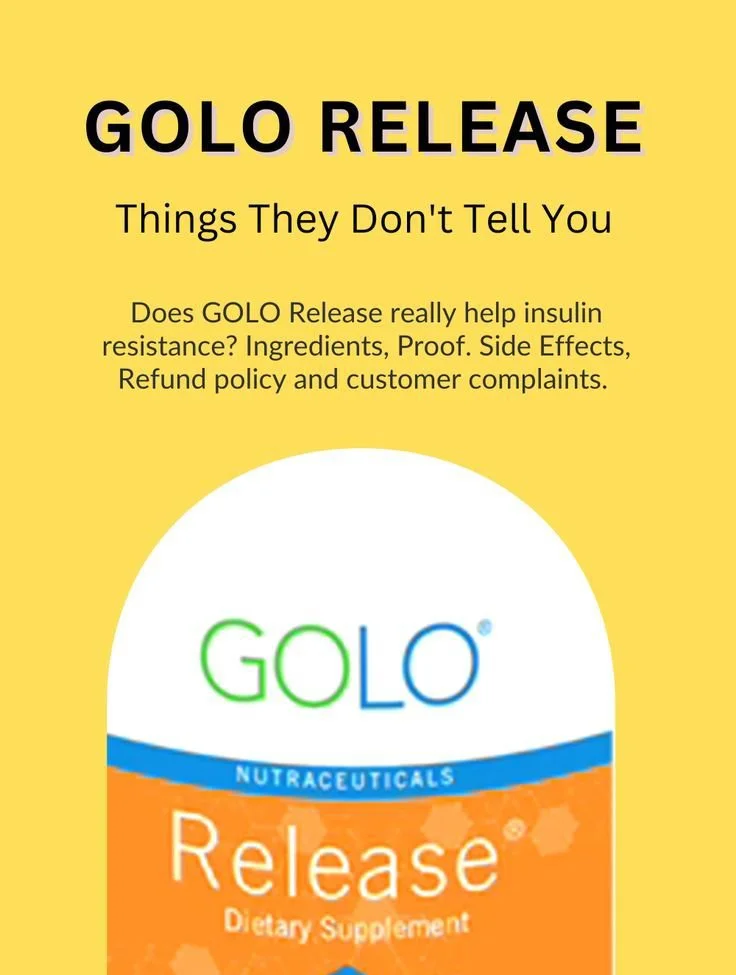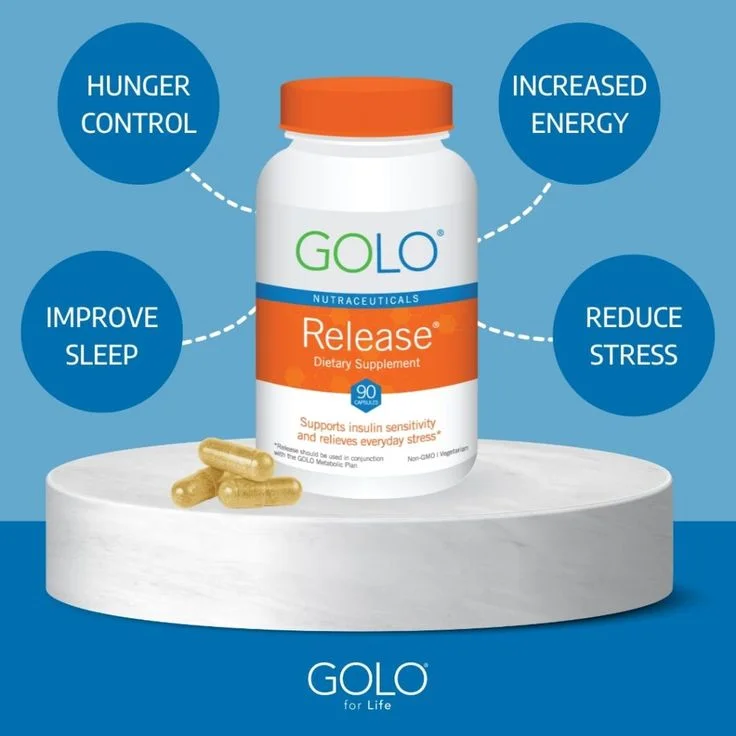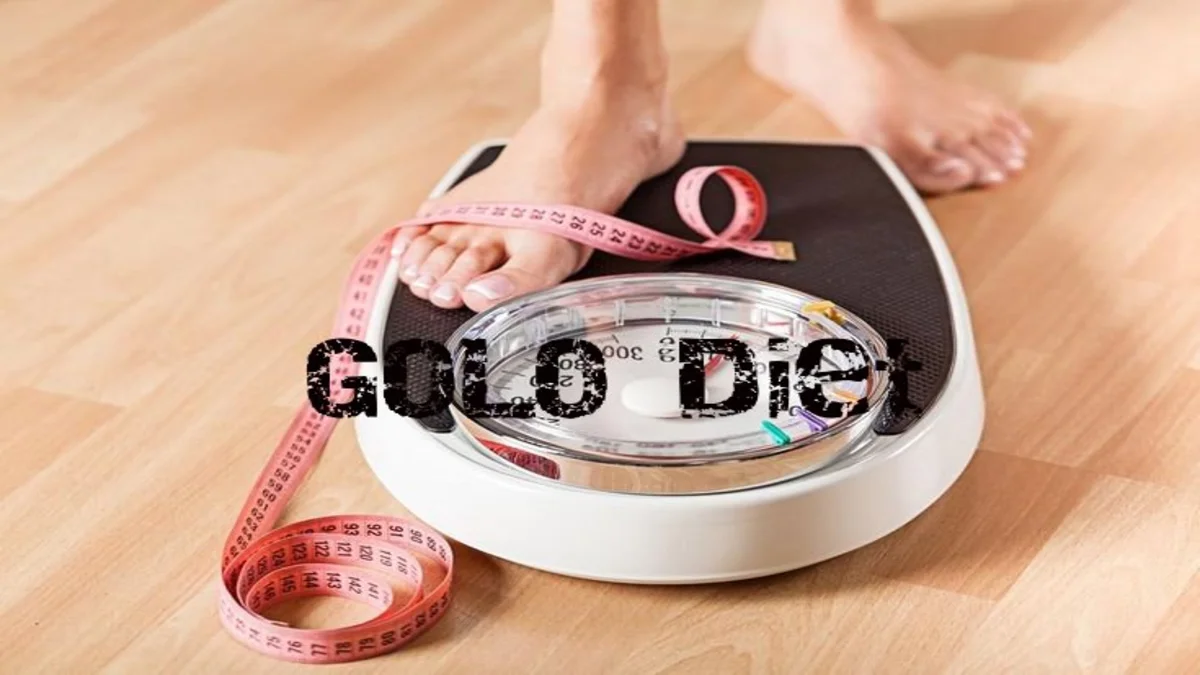The Golo diet is not your average diet craze. Unlike other diets (such as the Mediterranean diet, vegan, paleo, or keto), the Golo diet is a prescriptive method of eating that necessitates the use of a nutritional supplement while severely limiting your calorie intake. Furthermore, the Golo diet promises “healthy, sustainable, and affordable weight loss,” making it an appealing alternative for people looking to lose weight. While the Golo diet makes some bold health claims, individuals interested in giving it a try should proceed with caution. Continue reading to learn more about the Golo diet and whether it is appropriate for you.
What Is the Golo Diet?

The Golo diet was created in 2009 by a “team of dedicated doctors and pharmacists” (albeit no one knows who they are). This diet demands you to limit your daily calorie consumption to 1,300 to 1,500 “nutritionally-dense calories” while using their dietary supplement, Release. The idea is to promote metabolic health and fuel oneself with “proper nutrition” to increase energy levels and keep you full throughout the day. Furthermore, the Golo diet claims to help you “get healthier without cutting excessive calories, giving up food groups, or eating unhealthy diet foods.”
According to Brittany Lubeck, RD, a registered dietitian and nutrition writer, “the Golo diet is a restrictive and unsustainable diet on the market.” Nonetheless, according to their website, their diet would ‘assist your body digest stored fat, rebuild your metabolism, and reverse the harm caused by conventional diets.’ However, there is no scientific evidence to support these and other assertions.”
Golo Diet Foods List

The GOLO Diet is a popular and innovative approach to weight loss, emphasizing a balanced and sustainable way of eating. Central to the GOLO Diet’s philosophy is the inclusion of whole, nutrient-dense foods that promote a healthy metabolism and steady blood sugar levels. Here’s a comprehensive GOLO Diet Foods List to guide you on your journey to a healthier lifestyle:
- Fresh Fruits:
- Berries (blueberries, strawberries, raspberries)
- Apples
- Oranges
- Bananas
- Kiwi
- Grapefruit
- Vegetables:
- Leafy greens (spinach, kale, arugula)
- Cruciferous vegetables (broccoli, cauliflower, Brussels sprouts)
- Carrots
- Bell peppers
- Zucchini
- Tomatoes
- Lean Proteins:
- Chicken breast
- Turkey
- Fish (salmon, tuna, cod)
- Eggs
- Tofu
- Lentils
- Whole Grains:
- Quinoa
- Brown rice
- Oats
- Barley
- Whole wheat bread
- Farro
- Healthy Fats:
- Avocado
- Olive oil
- Nuts (almonds, walnuts, pistachios)
- Seeds (chia seeds, flaxseeds)
- Fatty fish (salmon, mackerel)
- Dairy and Alternatives:
- Greek yogurt
- Low-fat milk
- Cheese (in moderation)
- Almond or coconut milk
- Legumes:
- Black beans
- Chickpeas
- Kidney beans
- Lentils
- Herbs and Spices:
- Cinnamon
- Turmeric
- Ginger
- Garlic
- Basil
- Cilantro
- Beverages:
- Water (hydration is key)
- Herbal teas
- Black coffee (in moderation)
- Sweeteners:
- Stevia
- Honey (in moderation)
- Maple syrup (in moderation)
Remember, portion control is crucial in the GOLO Diet. While the emphasis is on nutrient-rich foods, being mindful of quantities can help achieve and maintain weight loss goals. Additionally, it’s advisable to consult with a healthcare professional or a nutritionist before making significant changes to your diet. The GOLO Diet Foods List serves as a guideline, offering a variety of delicious and nutritious options to support your health and well-being.
Foods to Avoid on the GOLO Diet Plan
1. Highly Processed Foods
- Avoid heavily processed foods with added sugars, artificial additives, and preservatives.
- Cut back on packaged snacks, sugary cereals, and convenience foods.
2. Refined Carbohydrates
- Minimize the consumption of refined carbohydrates like white bread, white rice, and sugary cereals.
- Choose whole grains instead, such as quinoa, brown rice, and oats.
3. Added Sugars
- Reduce the intake of foods and beverages with added sugars, including soda, candies, and sugary desserts.
- Be mindful of hidden sugars in sauces, dressings, and packaged foods.
4. Fried and Processed Meats
- Limit the consumption of fried meats and processed deli meats, as they often contain unhealthy fats and additives.
- Opt for lean sources of protein like grilled chicken, turkey, or plant-based alternatives.
5. Saturated and Trans Fats
- Cut back on foods high in saturated and trans fats, such as fried foods, fast food, and certain packaged snacks.
- Choose healthier fats found in avocados, nuts, seeds, and olive oil.
6. Excessive Dairy
- While dairy is not strictly forbidden, consider moderating high-fat dairy products.
- Opt for low-fat or fat-free dairy options, and be mindful of portion sizes.
7. High-Calorie Beverages
- Limit the intake of sugary drinks, including sodas, sweetened fruit juices, and high-calorie coffee beverages.
- Stay hydrated with water, herbal teas, or black coffee in moderation.
8. Alcohol
- Reduce alcohol consumption, as it can contribute empty calories and may affect blood sugar levels.
- If you choose to drink, do so in moderation and be mindful of the impact on your overall health.
9. Highly Processed Cooking Oils
- Minimize the use of highly processed cooking oils high in trans fats, such as vegetable oil and margarine.
- Opt for healthier cooking oils like olive oil or coconut oil.
10. Artificial Sweeteners
- Limit the use of artificial sweeteners, as some research suggests they may have an impact on metabolism.
- If a sweetener is needed, consider natural alternatives like stevia in moderation.
It’s important to note that individual responses to certain foods may vary. The GOLO Diet encourages a personalized approach, so individuals may need to adjust their food choices based on their unique preferences, health conditions, and responses to different foods. Additionally, consulting with a healthcare professional or nutritionist can provide personalized guidance based on individual needs and goals.
What Is the GOLO Diet Supplement?

The GOLO Diet Supplement, also known as GOLO Release, is a key component of the GOLO weight loss program. It consists of a blend of seven plant-based ingredients and three minerals:
Plant-based ingredients:
- Rhodiola extract: An adaptogen herb that helps manage stress and improve energy levels.
- Apple extract: Provides polyphenols, and antioxidants that support metabolic health.
- Banaba leaf extract: Contains corosolic acid, which may help regulate blood sugar levels.
- Gardenia fruit extract: May improve insulin sensitivity and glucose metabolism.
- Inositol: A carbohydrate that plays a role in cell signaling and blood sugar control.
- Berberine extract: A natural compound found in plants that may help reduce blood sugar and cholesterol levels.
Minerals:
- Magnesium: Essential for over 300 biochemical reactions in the body, including energy production and blood sugar regulation.
- Zinc: Plays a role in immune function, metabolism, and hormone balance.
- Chromium: Helps the body utilize insulin properly, thereby regulating blood sugar levels.
GOLO Diet Pros
1. Balanced and Sustainable
The GOLO Diet emphasizes a balanced and sustainable approach to weight loss. Unlike fad diets, it doesn’t rely on extreme restrictions or deprivation, making it more manageable and suitable for long-term success.
2. Metabolic Health Focus
A standout feature of the GOLO Diet is its emphasis on metabolic health. By addressing insulin resistance and promoting stable blood sugar levels, the diet not only aids in weight loss but also supports overall metabolic function, promoting energy balance.
3. Whole Foods Emphasis
Whole, nutrient-dense foods take center stage in the GOLO Diet. With a focus on fruits, vegetables, lean proteins, and whole grains, this approach ensures that followers not only lose weight but also nourish their bodies with essential vitamins and minerals.
4. Personalized Meal Plans
One size doesn’t fit all, and the GOLO Diet recognizes this. It provides personalized meal plans, taking into account individual metabolic factors, making it a tailored experience that enhances effectiveness.
5. No Calorie Counting
Say goodbye to meticulous calorie counting. The GOLO Diet simplifies the weight loss journey by promoting portion control and nutrient-dense choices, eliminating the need for constant calorie tracking.
6. Positive Impact on Health Markers
Beyond weight loss, the GOLO Diet has been associated with positive changes in health markers. Improved cholesterol levels, better blood pressure, and enhanced energy levels are reported benefits that contribute to an overall sense of well-being.
7. Behavioral Support
Recognizing the importance of behavioral aspects in weight management, the GOLO Diet provides support in the form of coaching and resources. This holistic approach addresses not just what you eat but also how you approach food and lifestyle choices.
8. Real Success Stories
The GOLO Diet boasts a growing community of success stories. Real people achieving real results underscore the effectiveness of this approach, adding credibility and motivation for those considering or already on the journey.
GOLO Diet cons
1. Initial Cost and Commitment
Implementing the GOLO Diet may require an initial investment in supplements and resources. Some individuals might find this cost prohibitive, and the commitment to the program may be challenging for those with budget constraints.
2. Supplement Dependence
A key component of the GOLO Diet is the use of Release, a patented supplement. While proponents argue its benefits, the reliance on supplements may not align with everyone’s preferences or dietary philosophies.
3. Learning Curve
The GOLO Diet introduces a unique 3-step approach that involves learning new habits and strategies. Some individuals may find the learning curve steep, impacting adherence and potentially causing frustration.
4. Limited Food Variety
The emphasis on specific food groups might lead to a limited variety in the diet, potentially causing monotony. This restriction may be challenging for individuals who enjoy diverse culinary experiences.
5. No Explicit Exercise Component
While the GOLO Diet primarily focuses on nutrition and metabolic health, it lacks a structured exercise component. For those who value a holistic approach to weight management, the absence of explicit exercise guidelines might be a drawback.
6. Individual Responses Vary
Like any diet plan, individual responses to the GOLO Diet can vary. While some people experience significant success, others may not achieve the same results. Factors such as genetics and lifestyle may contribute to these variations.
7. Limited Scientific Research
Although some studies support the principles behind the GOLO Diet, the body of scientific research is not as extensive compared to more established dietary approaches. This may leave some individuals seeking more empirical evidence before committing.
8. Community and Accessibility
The GOLO Diet community might not be as widespread or accessible as larger dieting communities. This lack of a broad support network could be a drawback for individuals who thrive on communal motivation.
How Much Does the GOLO Diet Cost?
golo diet pills price
e GOLO diet itself is technically free, but it requires purchasing their “Release” supplement to access the full details of the program. Therefore, the actual cost depends on your supplement usage:
Supplement Costs:
- 1 Bottle: $59.95 (90 capsules, lasts 30-45 days)
- 2 Bottles: $99.90 (180 capsules, lasts 60-90 days)
- 3 Bottles: $119.85 (270 capsules, lasts 90-135 days)
Additional Costs:
- Shipping: Free for orders over $25, otherwise $5
- Optional add-ons: Meal planning tools, coaching, and other resources can add to the cost.
Therefore, the monthly cost of GOLO can range from:
- $59.95: One bottle of Release, no additional add-ons.
- $79.90 – $99.90: Two bottles of Release, with or without shipping.
- $119.85 – $134.85: Three bottles of Release, with or without shipping.
Remember:
- These are just base costs. Adding other features like coaching or meal plans will increase the price.
- The effectiveness of GOLO varies between individuals.
- Consider consulting a healthcare professional before starting the GOLO diet.
Here are some resources for further research:
- GOLO website: https://www.golo.com/
- GOLO Diet Review: https://www.forbes.com/health/body/golo-diet-review/
- GOLO Diet Cost: https://patriciaandcarolyn.com/golo-cost/





